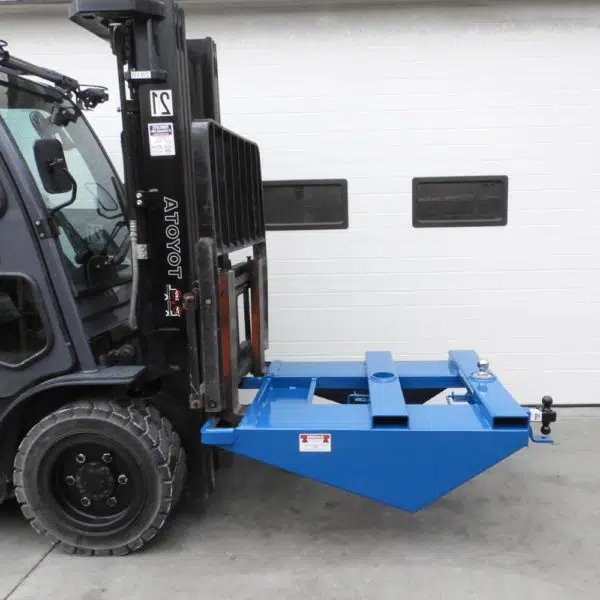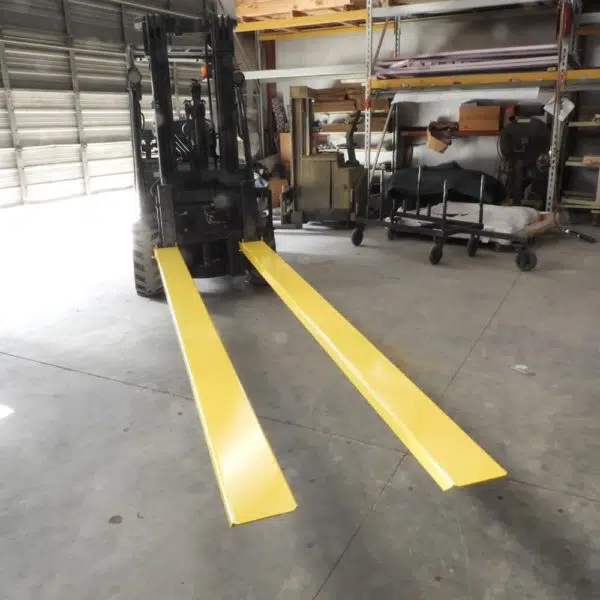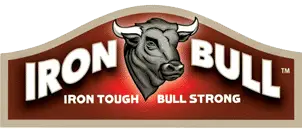Tractor ROPS (Roll-Over Protective Structures) and Canopies: Everything You Need to Know
Table of Contents:
The idyllic image of farming, with rolling meadows and tractors chugging along the fields, often overlooks a stark reality: farming can be hazardous work, and tractor rollovers are the leading cause of fatal injuries on farms. This sobering statistic underscores the critical importance of Roll-Over Protective Structures (ROPS). When coupled with a seat belt, a ROPS provides a 99% effective shield against severe injury or death during a rollover. This remarkable safety record transforms a potentially catastrophic event into a survivable incident.
Another farming hazard is excessive sun exposure. Prolonged sun exposure is a well-established risk factor for skin cancer, and farmers, due to their outdoor work, experience higher rates of the disease.
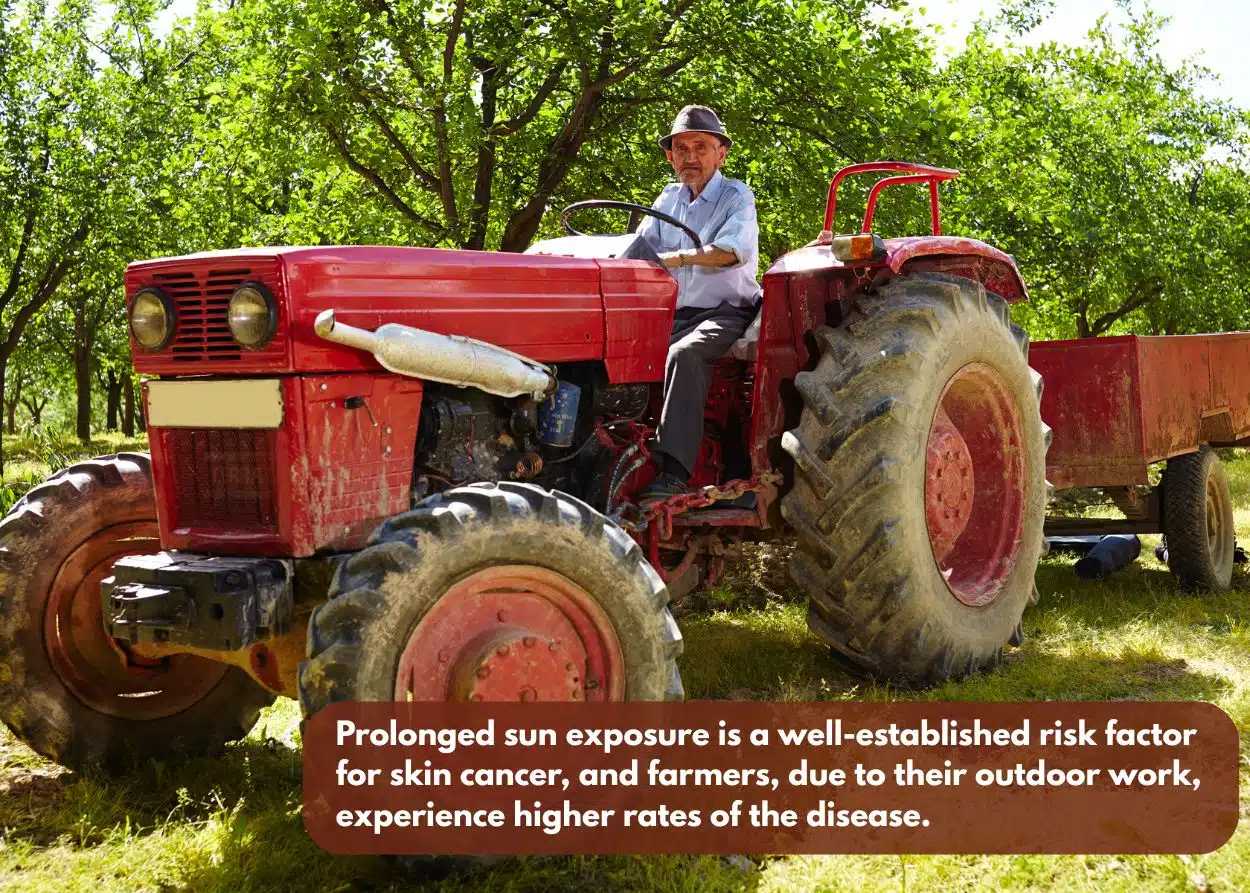
Tractor canopies are an accessory attached to ROPS to provide essential shade to help mitigate cancer risks and provide comfort from the sun as well as rain.
At Iron Bull Manufacturing, we specialize in certified aftermarket tractor ROPS and universal shade canopies to help keep you safe without hurting your tractor’s style or performance. Whether you’re a farmer with an older tractor that lacks modern safety features or a business looking to protect your operators, understanding ROPS and canopies will help you make informed decisions.
Let’s get started!
1. Terms to Know
Before we explain why a ROPS-canopy combination is indispensable for every tractor owner, let's first clarify some essential terminology.
- ROPS (Rollover Protective Structure): A reinforced roll bar or frame designed to protect the operator during a tractor rollover. A two-post roll bar or four-post frame creates a safe zone for the driver during an overturn. Always wear your seat belt when a ROPS is installed, as it works synergistically to keep you within the protected zone. While modern farm tractors are equipped with ROPS, many older models lack this crucial safety feature, making retrofitting essential.
- Canopy: In the context of tractors, a canopy is an overhead accessory cover or roof attached to a ROPS or tractor frame.
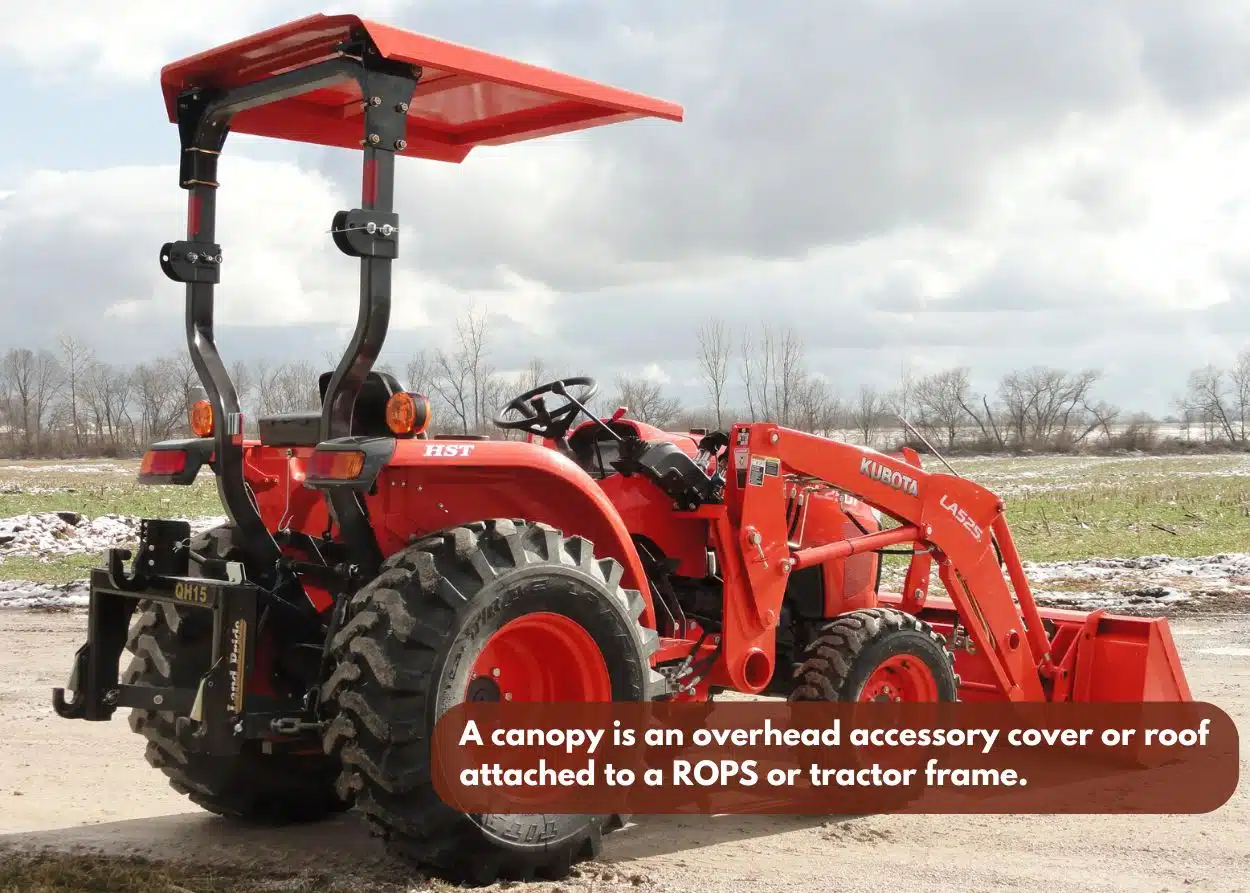
It provides shade and minor overhead protection against unpleasantries such as the occasional bird dropping. Canopies primarily shield the operator from sun and rain, significantly reducing heat stress and sun exposure during long work hours.
Note that tractor canopies are merely an accessory that is attached to the ROPS, and not part of the system. The canopy is not designed for structural rollover protection—during a tractor rollover, the ROPS frame protects the operator, likely destroying the canopy in the process.
- FOPS (Falling Object Protective Structure): A specialized canopy or cab structure that protects the operator from heavy falling objects commonly found in logging or construction environments.
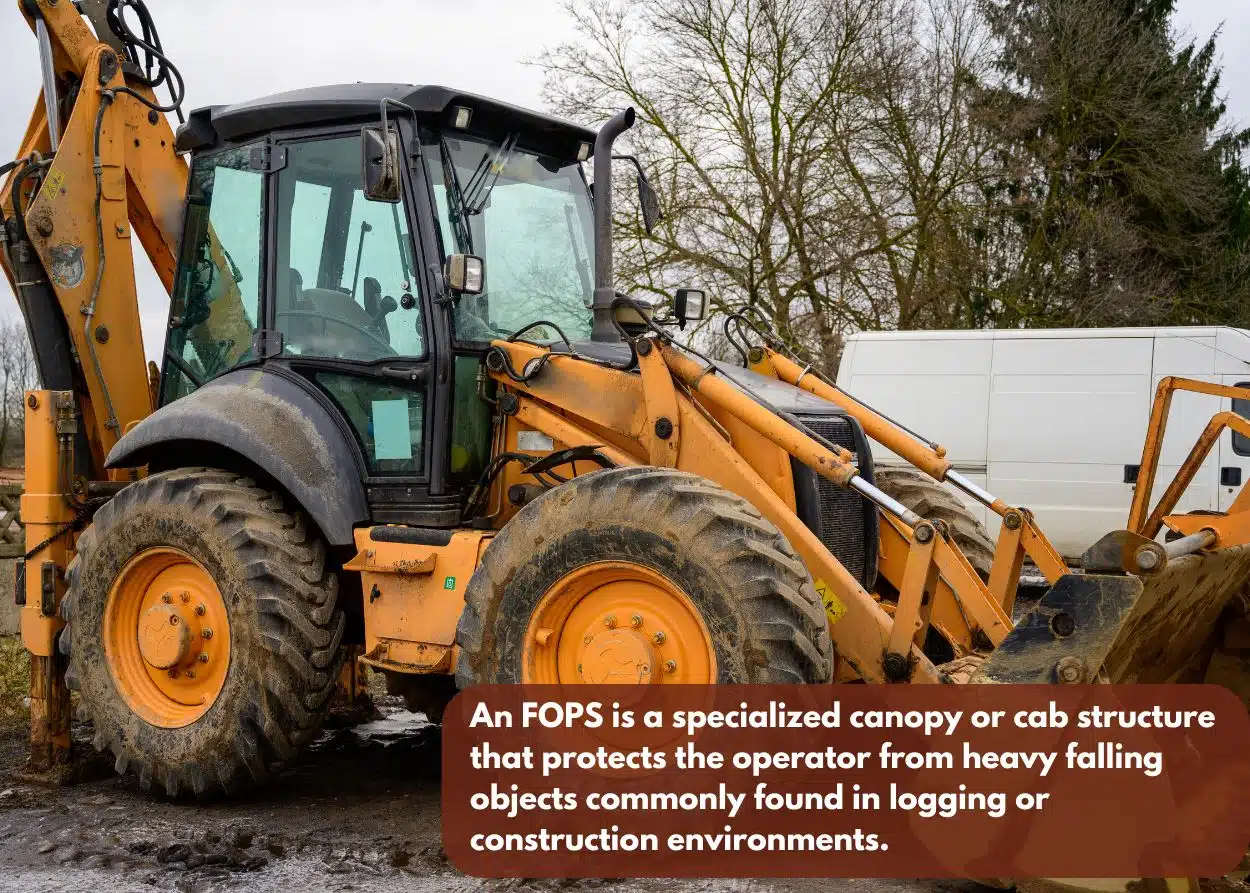
FOPS are robust structures meeting specific safety standards. While less common on agricultural tractors, FOPS are essential in situations with overhead hazards. It's important to note that a standard sun canopy is not rated as a FOPS unless explicitly specified and that ROPS and FOPS are designed to meet different requirements.
This blog focuses on ROPS and canopies, but if you’d like to know more about FOPS, check out this blog.
- Foldable ROPS: Many smaller tractors feature ROPS that can be folded down to facilitate clearance in low garages or under tree branches. However, a folded ROPS offers no protection. It's imperative to raise and lock a foldable ROPS upright before operating in open areas, ensuring its functionality in a rollover. Foldable ROPS offer convenience but require diligent use to maintain safety.
2. What Does “Certified ROPS” Mean?
The term "certified ROPS" signifies that a roll bar has undergone rigorous testing and meets specific safety standards established by regulatory and engineering organizations. A tractor rollover protection structure in the United States must pass tests outlined by SAE Standard J2194 and OSHA 29 CFR 1928.51 to be considered certified. This means manufacturers must design and test ROPS to withstand crushing, impact, and other forces involved in a rollover. If a ROPS successfully passes these stringent tests, it receives certification and a label confirming its compliance with OSHA/SAE ROPS requirements.
In Canada, ROPS certification requires adherence to the Canadian Standards Association norms (CSA B352.0 and B352.1). These standards, similar in intent, ensure the structure can support the tractor’s weight in a rollover and create a survivable space for the operator.
Certified ROPS typically feature a metal label or plate, often attached to the ROPS post or inside the tractor cab door. This label or plate indicates compliance with relevant standards and the manufacturer’s identification. When purchasing an aftermarket ROPS, ensure it includes documentation or labeling of its certification, which assures its performance in an accident.
Certification is paramount because your life may depend on it. While appearing sturdy, a non-certified or homemade ROPS may buckle or break during a rollover due to inadequate materials or engineering. For example, fabricating your roll bar might seem cost-effective, but without proper engineering and testing, it won’t provide the necessary protection and could instill a false sense of security. On the other hand, Certified ROPS undergo meticulous design processes, including static and dynamic crush tests, stress analysis, and quality control, ensuring their reliability. Reputable manufacturers like Iron Bull Manufacturing adhere strictly to these standards.
The bottom line? Always insist on a certified ROPS for your tractor. If your tractor comes with a factory ROPS, keep it in place and good condition by periodically inspecting it for damage or corrosion. If your tractor has no rollover bar, install an approved aftermarket ROPS immediately.
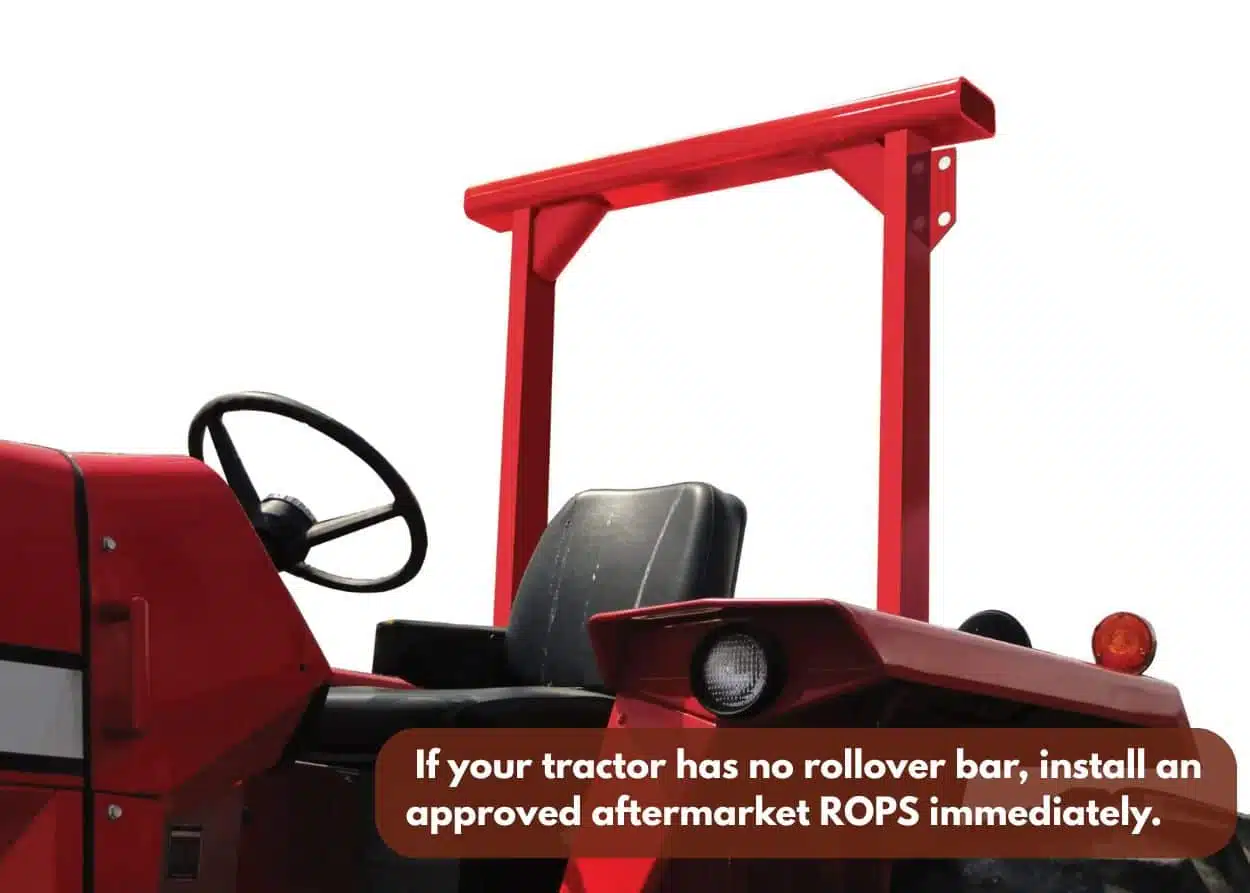
It’s not just about complying with safety guidelines—it’s about protecting your life and livelihood. (Fun fact: OSHA regulations required ROPS on all tractors used by employees in the US as far back as the 1970s, and by 1985, virtually all new tractors were sold with ROPS standard.)
3. Why You Need Both a ROPS and a Canopy on Your Tractor
While a certified ROPS is essential for preventing fatal rollover accidents, a canopy offers crucial protection from sun and weather. Some tractors may only have a ROPS without a canopy, or vice versa. The ideal setup combines a certified ROPS and a canopy for optimal safety and comfort.
- ROPS save lives in rollovers: Tractor rollovers can occur unexpectedly, even on flat terrain, due to hidden hazards or sudden maneuvers. Statistics indicate that approximately 1 in 10 tractor operators will experience an overturn in their lifetime, resulting in around 130 fatalities annually in the U.S. Proper ROPS, when used with a seat belt, prevents the tractor from crushing the operator.
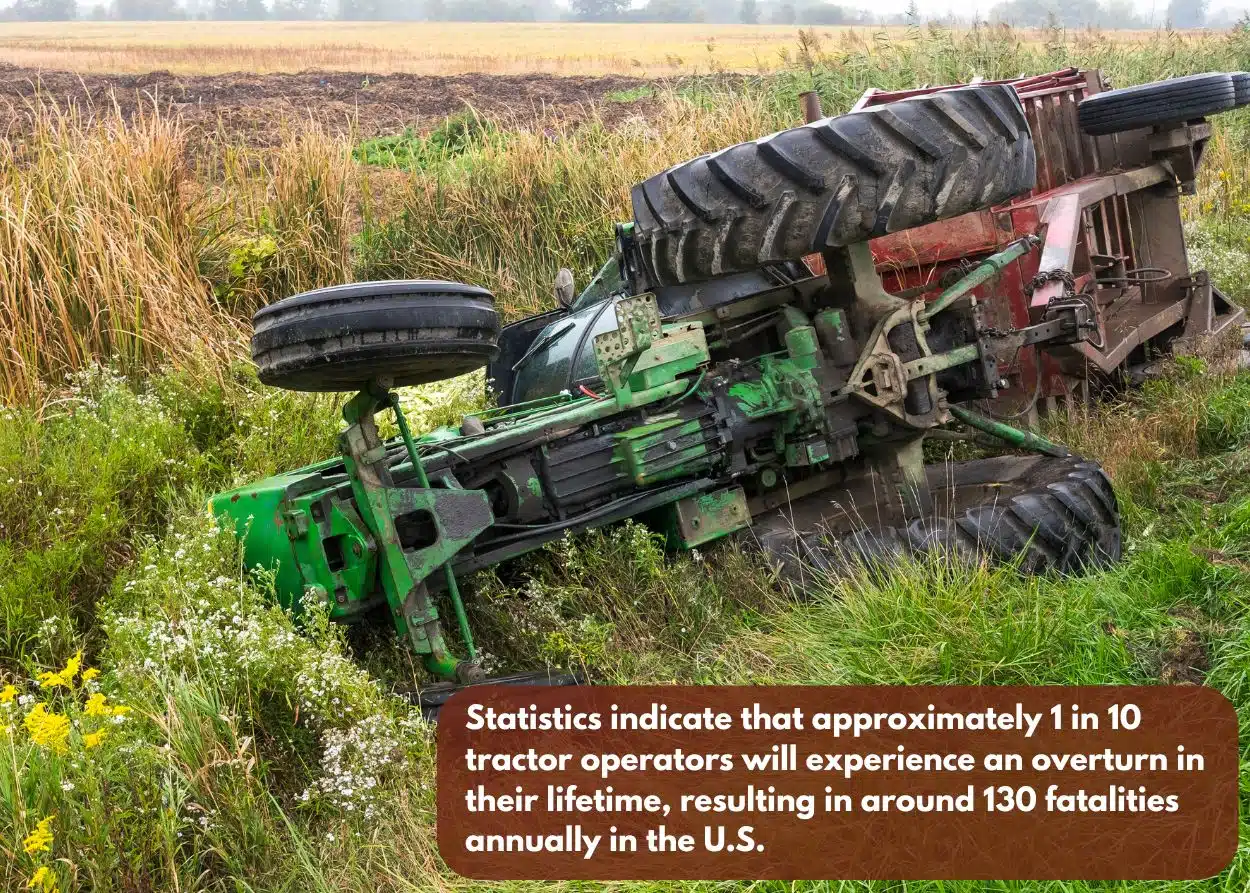
- Canopies protect from sun and weather: Farming and landscaping involve prolonged outdoor exposure, which increases the risk of skin cancer and heat-related illnesses. A canopy provides shade, reducing UV exposure and protecting against sunburn and long-term skin damage. It also helps prevent heat stroke and dehydration, enhancing operator comfort and productivity.
- Combined protection: The ROPS and canopy combination offers comprehensive protection against rollovers and the elements. A comfortable operator is a safer operator, reducing the likelihood of accidents.
- Modern design compatibility: Aftermarket ROPS and canopy kits are designed to work together, with canopies typically mounting directly to the ROPS frame. Quality canopies like the ones we sell at Iron Bull are made of durable materials and secure mounting brackets, ensuring stability over rough terrain.
- Customization: Canopies can be tailored to match your tractor and needs, maintaining the classic look of vintage models. Options include various sizes, materials, designs, and colors, allowing you to choose a canopy that suits your specific environment and requirements.

4. Frequently Asked Questions about Tractor ROPS & Canopies
- Do I really need a ROPS if I only drive carefully on flat land?
- Yes, even careful operators can experience rollovers due to unforeseen hazards. Knowledge, training, and situational awareness are critical for safe operation.
- Can I add a ROPS or canopy to my older tractor?
- Yes, most older tractors can be retrofitted with aftermarket ROPS and canopies.
- Do I need to wear a seat belt with a ROPS?
- Yes, the ROPS and seat belt work together to protect the operator.
- Can I fabricate my own ROPS or canopy?
- No, homemade ROPS and canopies may fail under stress and pose safety risks.
- Will a fold-down ROPS protect me if it’s folded down?
- No, a foldable ROPS only provides protection when upright and locked.
Proper operation of a tractor with ROPS requires following safety precautions—just like any piece of machinery, whether or not you’re protected.
5. Conclusion
Investing in a certified ROPS and a quality canopy is crucial in ensuring your safety and well-being while operating a tractor. These features provide essential protection against rollovers and the elements, enhancing safety and comfort. Understanding the importance of ROPS and canopies and making informed decisions can create a safer and more productive work environment.
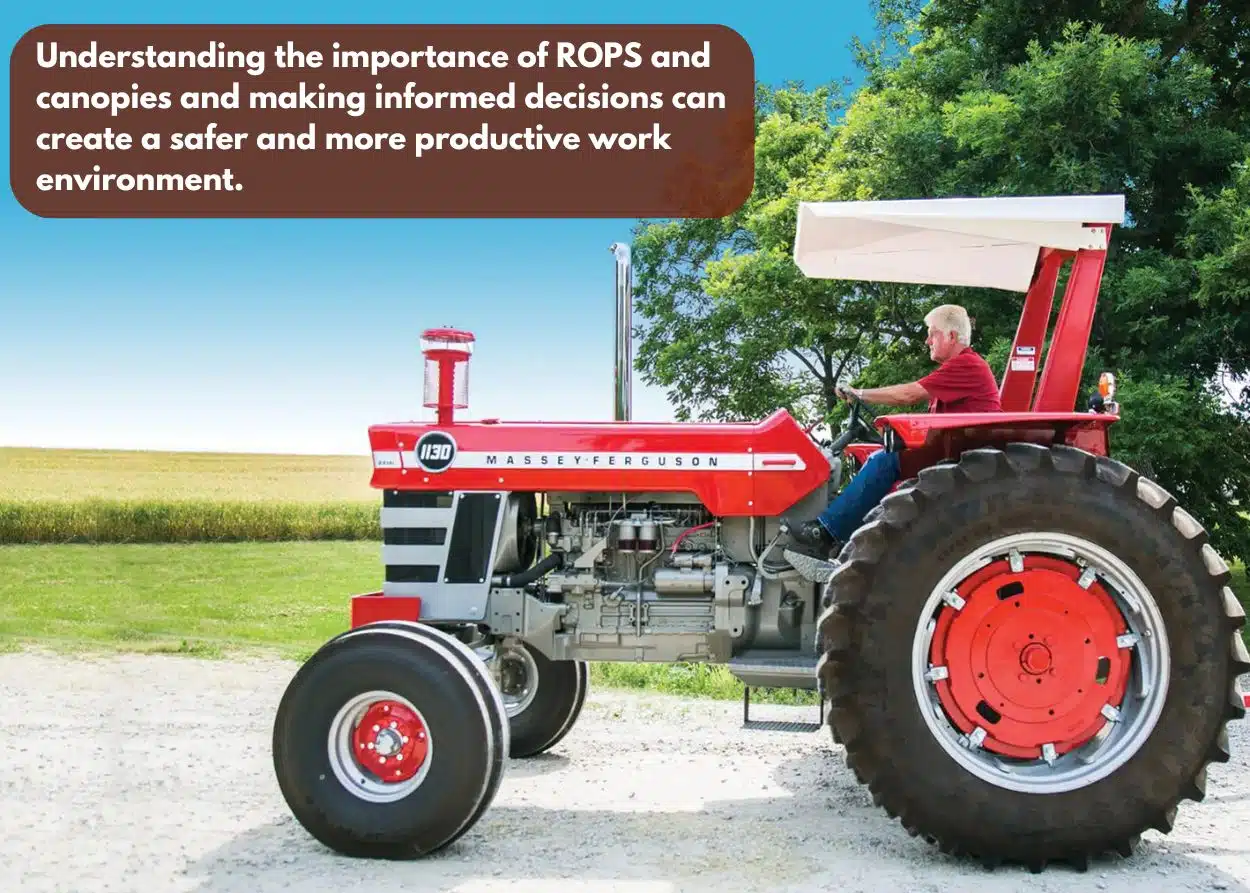
At Iron Bull Manufacturing, we’ve been building certified ROPS and canopy systems since 2015. Since our first ROPS was installed for our customers, we are proud to have saved over 750 lives, and we will continue to strive to build better and safer systems.
Remember: rollovers are survivable—and even preventable—when you’ve got the right gear. Let’s make every field and job site safer, one tractor at a time. Contact us today to discuss your ROPS and canopy needs!
